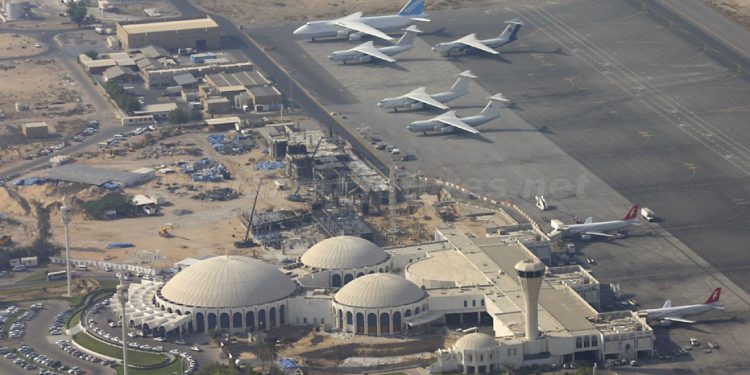Sharjah is seeking to position itself as a niche aviation connection centre, with the local budget airline expanding the number of routes it serves and specialist carriers focusing on potential in the upper end of the market. High costs and stiff competition, however, could pose a challenge to the emirate’s ambitions.
The aviation sector in the Middle East is expanding rapidly, with some 65 airlines now based in the region, operating just over 1000 aircraft out of 70 airports. Investment in aircraft is on the rise too, with carriers modernizing and expanding their fleets, and a recent report by market research firm Frost & Sullivan said that infrastructure spending in the sector across the Middle East would top $85bn between now and 2025.
In line with this region-wide trend, Sharjah is looking to expand its existing facilities too. The Frost & Sullivan report said the emirate would be spending $136m to improve the international airport, an investment that would increase its passenger and aircraft handling capacity.
One of the reasons for the increased investment in Sharjah’s airport is the success of local low-cost carrier (LCC) Air Arabia, the Gulf region’s first budget airline. Launched in 2003, the carrier has 30 aircraft, with some 40 more on the order books.
In early May, Air Arabia announced its first-quarter results, with the LCC recording an 11% jump in profits and a 7% increase in passenger numbers. The airline posted profits of $13.4m on turnover of $169m, and filled 1.23m seats for the opening three months of the year, up from the 1.15m in the same period in 2011.
The strong results demonstrated the airline’s sound business model and market appeal, even though it was operating in a difficult environment, said Sheikh Abdullah Bin Mohammed Al Thani, the chairman of Air Arabia.
“Though political instability and sustained high fuel costs continue to challenge regional carriers, the appeal of air transport, and especially the low-cost model pioneered by Air Arabia in the region, remains strong,” he told local media.
While the quarterly result is a good one, the airline may find the going harder if it does not maintain its expansion into new routes, some analysts suggest. According to Mohammad Kamal, the director of equity research at Arqaam Capital, Air Arabia will have to fight hard to further increase its market share in the face of growing competition.
“We expect competitive pressure to arise from well-established LCCs serving the Indian subcontinent, as well as regional carriers,” he said in early May, adding that if Air Arabia was able to build on its existing network of secondary connection centers in Egypt and Morocco, it would “create a regional footprint that capitalizes on transit traffic linking Europe, MENA and Asia”.
Despite these concerns, Adel Ali, the CEO of Air Arabia, is confident the LLC can continue to gain altitude.
“The business seems to be good, forward bookings are good, we are hitting the summer season, we are expecting a good year,” Ali said in an interview with logistics publication Arabian Supply Chain on May 31.
Further supporting the sector’s overall positive assessment is UK-based business aviation and services company Gama Aviation, which established a major base in the emirate three years ago. Marwan Khalek, the CEO, believes this move will allow it to tap into a rich and expanding market. Sharjah is well placed to act as an alternative entre porte for visitors to Dubai, and Khalek believes there are definite openings that can be filled.
“Sharjah is very close to Dubai city, where a lot of business is done,” Khalek said in an interview with industry magazine, Arabian Aerospace, in mid-May. “Business aviation works, as people can get to where they want, when they want. With the constraints on business aviation at Dubai, Sharjah will be very quick to get in and out from, and with the excellent new roads in the UAE, VIP passengers will quickly be able to get to their destinations.”
In January 2012, Gama established a fixed-base operation at Sharjah International, taking over responsibility for all business and general aviation aircraft handling at the airport, part of its strategy to encourage carriers to use the local airport as a business travel centre. The strategy, and the advantages Sharjah has over other airports, appears to be paying off, with a 25% increase in the number of business jet movements in the first three months of 2012 compared to the same period in 2011, a result that was followed up by a doubling of movements for April year-on-year.
With Sharjah also seeking to boost its standing as a tourism destination for both GCC and international visitors, investing in new hotels and resorts and promoting itself as an ecotourism holiday spot, local and foreign carriers may get even busier in the coming years.
Oxford Business Group
11 June

























































